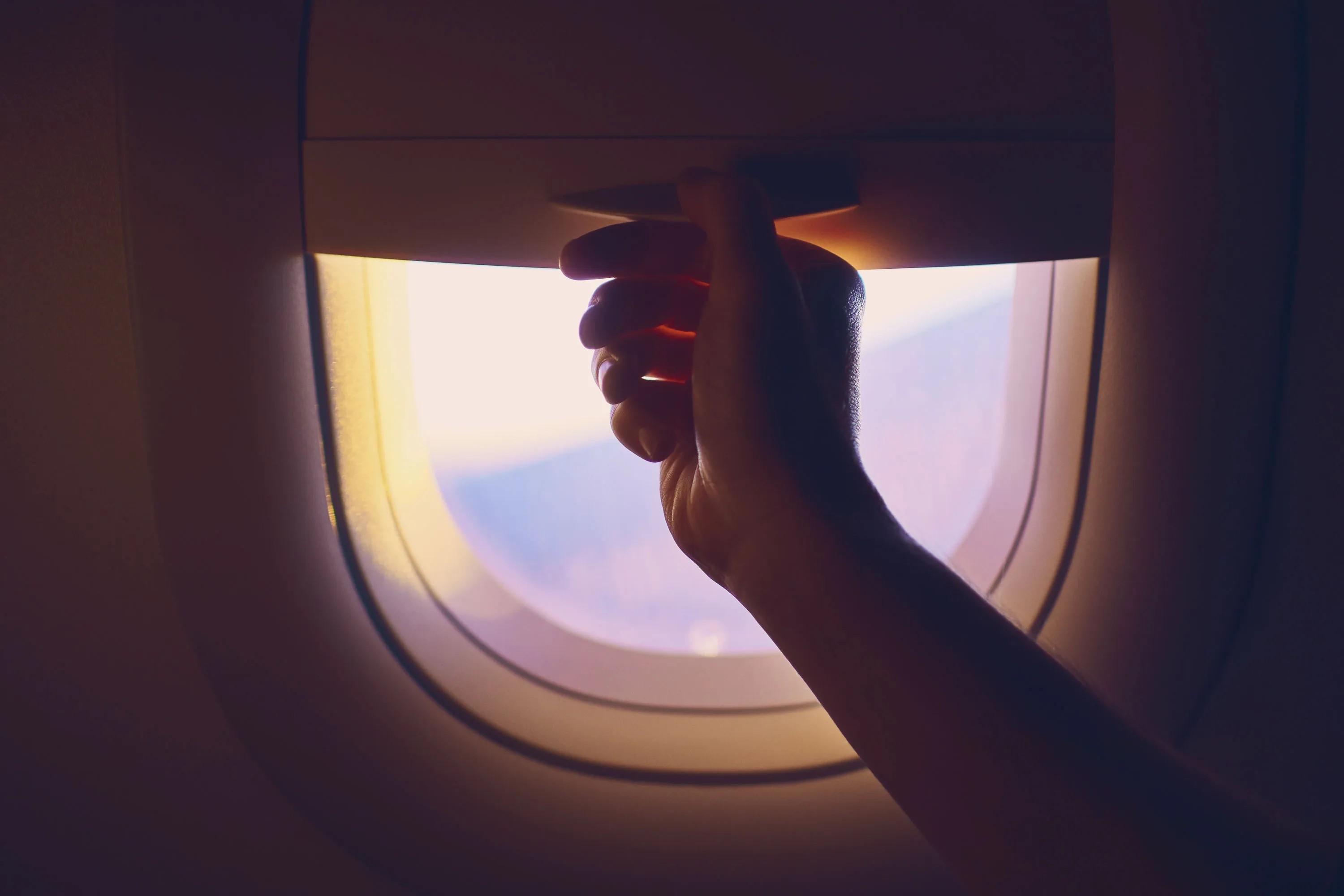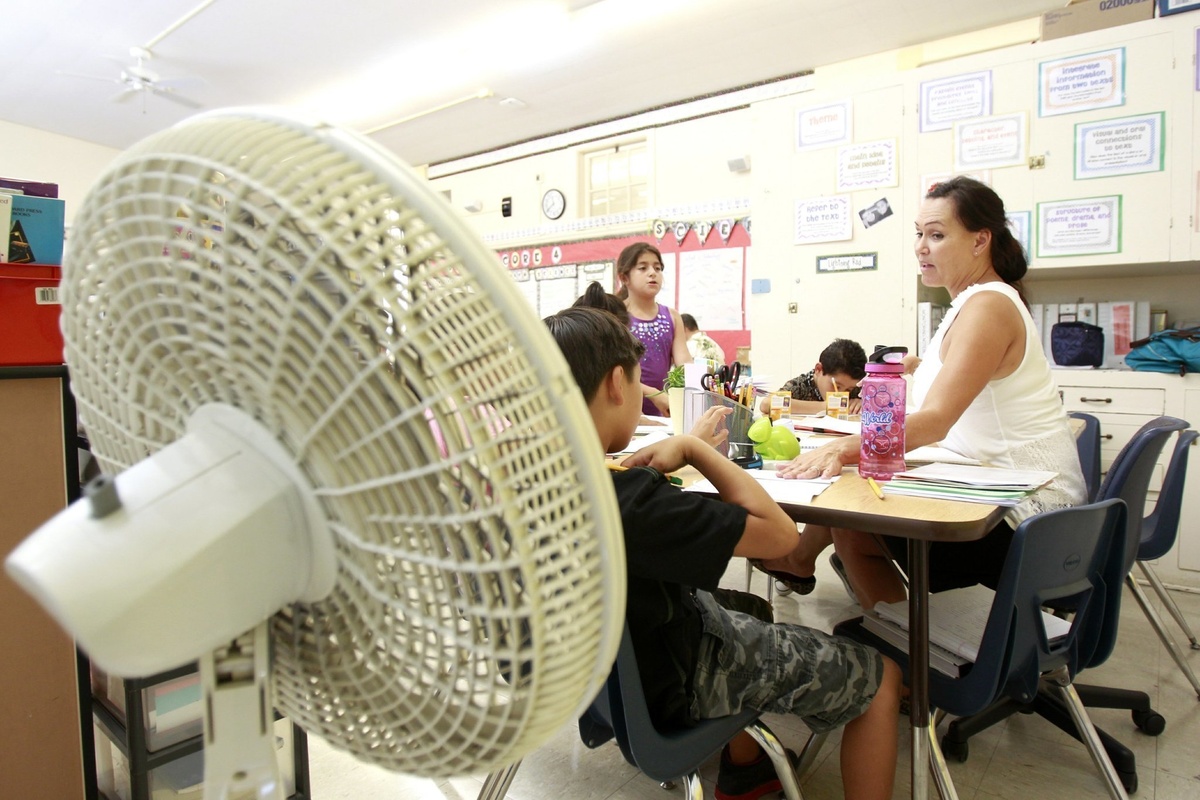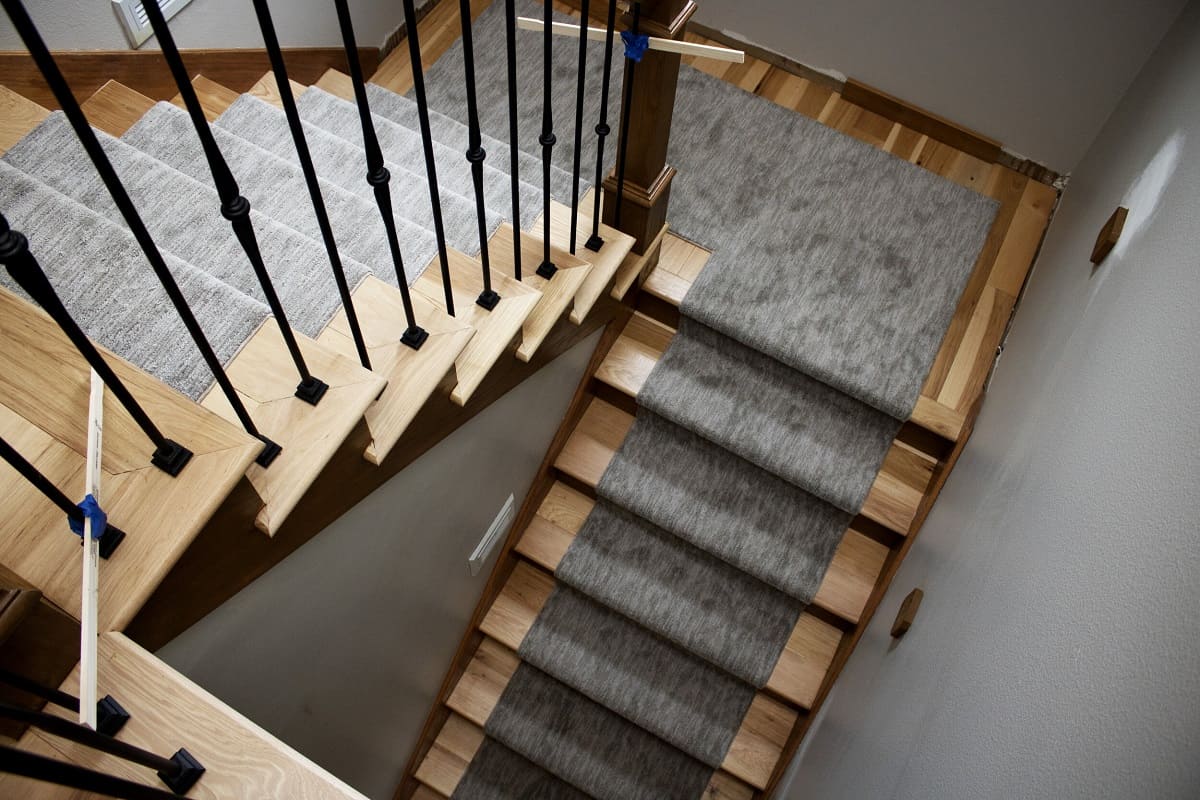Home>Articles>Why Do Plane Blinds Have To Be Open For Landing


Articles
Why Do Plane Blinds Have To Be Open For Landing
Modified: December 7, 2023
Discover why plane blinds must be open during landing in this informative article. Learn about the safety reasons behind this important aviation practice.
(Many of the links in this article redirect to a specific reviewed product. Your purchase of these products through affiliate links helps to generate commission for Storables.com, at no extra cost. Learn more)
Introduction
When you’re on an airplane preparing for landing, you might have noticed that the window blinds need to be open. It might seem like a small detail, but have you ever wondered why it’s necessary? In this article, we’ll explore the reasons behind this seemingly insignificant requirement, and understand why plane blinds have to be open for landing.
The purpose of keeping the plane blinds open during landing is not just a random rule. It is a crucial safety regulation put in place by aviation authorities and airlines worldwide. These regulations ensure the safety and well-being of both passengers and crew members.
In the following sections, we will delve into the various reasons why plane blinds must remain open during landing, including safety regulations and guidelines, maintaining visibility for pilots, assisting with emergency evacuations, and enhancing passenger awareness and preparedness. Let’s explore each of these aspects in detail to understand the rationale behind this requirement.
Key Takeaways:
- Open plane blinds during landing are crucial for passenger safety, providing natural light, enhancing spatial awareness, and aiding in emergency evacuations. It’s a small requirement with significant safety implications.
- The open blinds also play a vital role in maintaining visibility for pilots, assisting with informed decision-making during landing, and adhering to global safety regulations. It’s a small action with big safety impacts.
Read more: Why Do Bars Have Mirrors
The Purpose of Plane Blinds
The primary purpose of plane blinds, also known as window shades or window blinds, is to control the amount of sunlight entering the cabin. Passengers can adjust the blinds to their desired level, allowing them to manage glare and brightness during the flight, creating a more comfortable environment inside the aircraft.
However, during the critical phases of landing and takeoff, when the aircraft is at a lower altitude, plane blinds must be fully open. This requirement serves several important purposes, mainly related to safety and emergency procedures.
One crucial reason for keeping the plane blinds open is to allow natural light to enter the cabin. In the event of an emergency evacuation, the natural light provided by open blinds helps passengers to maintain spatial awareness inside the aircraft. This can be especially helpful in situations where the cabin lighting may be compromised, such as during a power failure.
Additionally, open blinds allow the passengers to have a clear view of the outside environment. This enables them to assess their surroundings, including potential obstacles or hazards, which can be crucial information during an emergency evacuation. It also helps passengers orient themselves and stay prepared for any unforeseen circumstances that may arise.
Furthermore, open blinds provide a direct line of sight for cabin crew and ground personnel to assess the conditions outside the aircraft. This is essential for crew members to quickly evaluate the situation and make informed decisions during an emergency evacuation. Clear visibility allows them to efficiently direct passengers towards the nearest exits or guide them away from dangerous areas.
Overall, the purpose of keeping plane blinds open during landing is to ensure the safety and preparedness of both passengers and crew members. By maintaining visibility, passengers can effectively navigate the aircraft during emergencies, while the crew can assess the situation and execute evacuation procedures swiftly and efficiently. It is an integral part of the safety measures implemented in the aviation industry.
Safety Regulations and Guidelines
The requirement to keep plane blinds open during landing is not just a suggestion but a mandated safety regulation imposed by aviation authorities. These regulations ensure consistent practices across airlines and prioritize passenger safety. Let’s explore some of the safety regulations and guidelines related to plane blinds.
The Federal Aviation Administration (FAA) in the United States states that during takeoff and landing, all window shades must be open. The rationale behind this regulation is to ensure that passengers have an unobstructed view outside the aircraft. This allows them to be aware of any potential hazards and assists in their ability to quickly evacuate the aircraft in case of an emergency.
Similarly, the European Aviation Safety Agency (EASA) also enforces regulations requiring the opening of window blinds during landing and takeoff. EASA highlights the importance of keeping the blinds open to help passengers maintain visual contact with the outside environment, enhancing their situational awareness during critical phases of flight.
It is worth noting that these regulations are not limited to commercial airliners. They apply to all types of aircraft, including private jets and smaller aircraft used for different purposes like training and transportation.
In addition to regulatory requirements, airlines often have their own set of guidelines and procedures regarding the use of plane blinds. These guidelines are designed to ensure consistency and adherence to safety protocols across their fleets. They could include instructions for cabin crew to verify that window blinds are open during landing and takeoff, and to communicate any deviations from these procedures to the flight crew.
Overall, safety regulations and guidelines surrounding plane blinds are in place to prioritize passenger safety. By keeping the blinds open, authorities and airlines aim to provide passengers with the best chance of survival and a quick and safe evacuation in case of an emergency.
Maintaining Visibility for Pilots
One of the critical reasons why plane blinds must be open during landing is to maintain visibility for the pilots in the cockpit. Clear visibility is essential for pilots to assess the runway conditions, monitor other aircraft in the vicinity, and make precise judgments during the landing process.
During landing, pilots rely heavily on visual cues, both from instruments in the cockpit and from the external environment. The open blinds provide additional peripheral vision, allowing pilots to have a broader view of their surroundings. This is particularly important for situational awareness, especially when it comes to identifying any potential obstacles or hazards on or near the runway.
Furthermore, open blinds enable pilots to monitor the movement of other aircraft on the ground or in the air. By having an unobstructed view, pilots can better assess the position and distance of other aircraft, ensuring safe separation and minimizing the risk of collision.
Instrument landing systems play a crucial role in guiding pilots during low-visibility conditions. However, even with sophisticated technology, visual confirmation of runway markings, lighting, and other visual cues can significantly enhance the accuracy and effectiveness of the landing process.
Moreover, open blinds allow pilots to assess weather conditions and changes in visibility during the landing approach. By having a clear view outside the aircraft, pilots can make informed decisions and adjust their approach speed, altitude, and landing configuration accordingly.
Overall, maintaining visibility for pilots is of utmost importance during landing. The open blinds offer an additional visual perspective, enabling pilots to make informed decisions and ensuring the safe and precise execution of the landing process.
Keep plane blinds open for landing to allow natural light in case of emergency evacuation. It also helps passengers adjust to the outside light during landing.
Assisting with Emergency Evacuations
In the event of an emergency that requires the evacuation of an aircraft, having the plane blinds open plays a crucial role in assisting passengers and crew members during this high-stress situation. Let’s explore how open blinds aid in emergency evacuations.
During an evacuation, time is of the essence, and every second counts. Open blinds allow natural light to enter the cabin, illuminating the interior and providing better visibility for passengers and crew members moving through the aisles. This visibility can be vital, especially in situations where the cabin lighting may be compromised due to power failures or emergency situations.
Open blinds also provide passengers with a clear view of the outside environment, allowing them to assess the conditions and surroundings outside the aircraft. This can be crucial information for passengers to quickly determine the safest exit routes and avoid any obstacles that may impede their evacuation.
Furthermore, the natural light provided by open blinds helps passengers maintain spatial awareness within the cabin. This allows them to navigate through the aircraft more effectively, locate emergency exits, and follow instructions from the cabin crew or emergency response personnel.
Cabin crew members play a pivotal role in ensuring the orderly and efficient evacuation of an aircraft. Open blinds allow them to visually assess the conditions outside the aircraft, which aids in determining the safest evacuation procedures. They can evaluate factors such as the presence of fire, smoke, or debris, and guide passengers towards the most suitable exits accordingly.
Additionally, open blinds allow ground personnel and emergency responders to assess the situation outside the aircraft. They can quickly determine the best access points, prepare for potential hazards, and coordinate their efforts to facilitate a swift and safe evacuation process.
In summary, the open blinds during an emergency evacuation provide critical visual aids for passengers, cabin crew, and emergency responders. The natural light and enhanced visibility contribute to better orientation, clearer assessment of surroundings, and improved coordination, ultimately helping to ensure a safer and more efficient evacuation.
Read more: Why Do Stairs Have A Lip
Enhancing Passenger Awareness and Preparedness
Another important reason why plane blinds must be open during landing is to enhance passenger awareness and preparedness. Keeping the blinds open plays a role in informing passengers about their surroundings, potential hazards, and emergency procedures. Let’s explore how open blinds contribute to passenger awareness and preparedness.
Firstly, open blinds provide passengers with a direct view of the outside environment, including the runway and surrounding areas. This allows passengers to have a sense of the aircraft’s position and progress during the landing approach. It helps them understand when the plane is preparing for landing, which can be important information for individuals who experience anxiety or motion sickness during descent.
Additionally, open blinds enable passengers to observe any potential hazards or abnormalities outside the aircraft. For example, if passengers notice smoke, fire, or other unusual circumstances, they can promptly inform the cabin crew, who can take immediate action to address the situation or provide necessary instructions to ensure passenger safety.
Moreover, open blinds assist passengers in familiarizing themselves with the exterior of the aircraft and the location of emergency exits. This awareness enables passengers to act swiftly and efficiently during an emergency evacuation, as they already have a visual reference of the nearest exit routes.
Open blinds also play a role in preparing passengers for potential emergency situations. By having an unobstructed view of the outside environment, passengers can mentally rehearse the evacuation process, including identifying nearby exits, observing the presence of emergency equipment, and visualizing the sequence of actions they may need to take in case of an emergency.
Furthermore, the natural light provided by open blinds contributes to a more alert and engaged passenger mindset. It helps passengers stay awake and attentive during the critical phases of landing and underscores the importance of following safety instructions from the cabin crew.
Overall, open blinds enhance passenger awareness and preparedness by providing visual information about the aircraft’s progress, potential hazards, and emergency procedures. This visual awareness can empower passengers to act quickly and effectively during emergencies, contributing to their safety and the overall success of the evacuation process.
Conclusion
In conclusion, the requirement to keep plane blinds open during landing serves important purposes related to safety, visibility, and passenger preparedness. It is not just a random rule, but a well-thought-out regulation implemented by aviation authorities worldwide.
By keeping the plane blinds open, passengers are provided with natural light and an unobstructed view outside the aircraft. This enables them to maintain spatial awareness, assess their surroundings, and be better prepared for any potential emergency situations. Furthermore, open blinds assist cabin crew and ground personnel in evaluating the conditions outside the aircraft, facilitating efficient decision-making and effective evacuation procedures.
Maintaining visibility for pilots is also a crucial factor in open blinds during landing. Clear visibility allows pilots to have a broader view, monitor other aircraft, assess runway conditions, and make informed judgments during the landing process, ensuring the safety and accuracy of their maneuvers.
Moreover, the requirement to keep plane blinds open is supported by safety regulations and guidelines imposed by aviation authorities and airlines. These regulations aim to provide a standardized approach to passenger safety and ensure consistent practices across the industry.
In summary, open plane blinds during landing are necessary for passenger safety, passenger awareness and preparedness, pilot visibility, and adherence to safety regulations and guidelines. It is a small yet significant requirement that contributes to the overall safety and efficiency of air travel. So the next time you find yourself on an airplane preparing for landing, remember to keep those plane blinds open, knowing that it’s a vital part of keeping you safe and informed during your journey.
Frequently Asked Questions about Why Do Plane Blinds Have To Be Open For Landing
Was this page helpful?
At Storables.com, we guarantee accurate and reliable information. Our content, validated by Expert Board Contributors, is crafted following stringent Editorial Policies. We're committed to providing you with well-researched, expert-backed insights for all your informational needs.














